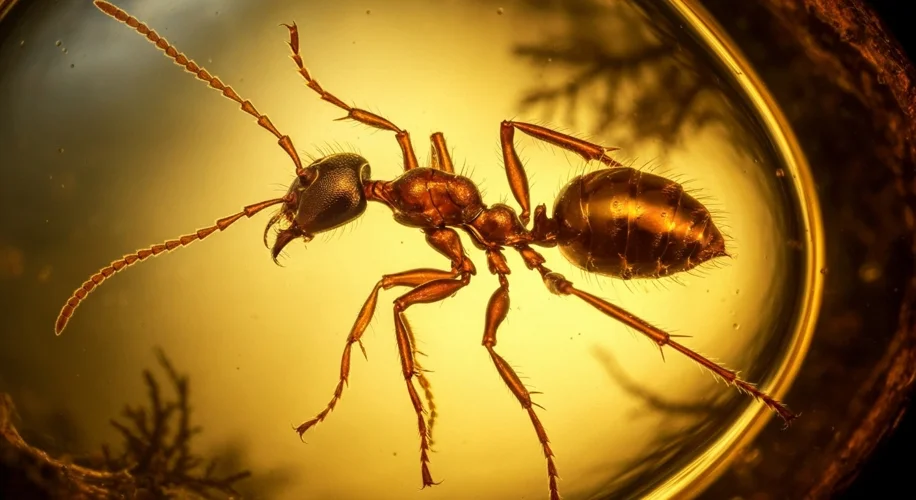Imagine a world 16 million years ago. Lush forests teemed with life, and among them, tiny architects were busy at their ancient tasks. For millennia, these creatures, ants, have been the unsung heroes of our planet’s ecosystems. But what secrets do their ancient forms hold? Today, we delve into a remarkable discovery that offers a tantalizing glimpse into the deep past: an exceptionally rare ant fossil, preserved for an astonishing 16 million years.

Fossils are nature’s time capsules, offering scientists invaluable data about life’s evolution. While fossilized insects are not uncommon, finding an ant of this age, and in such pristine condition, is akin to striking paleontological gold. This particular specimen, unearthed from ancient geological strata, provides a unique window into the Miocene epoch, a period of significant environmental change and diversification for many species.
The significance of this find lies in its potential to illuminate the evolutionary journey of ants. Ants, belonging to the family Formicidae, are among the most successful and widespread insects on Earth. Their complex social structures, efficient foraging strategies, and remarkable adaptability have allowed them to colonize virtually every terrestrial habitat. Studying ancient ants, especially those preserved in exquisite detail, allows researchers to trace the development of these traits, understand their genetic lineage, and map their ancient distribution.
This 16-million-year-old ant, with its delicate antennae and segmented body, appears remarkably similar to some of its modern-day descendants. Yet, subtle anatomical differences might hold clues to its ancient lifestyle and its place in the Miocene food web. Was it a solitary hunter, or part of a burgeoning social colony? Did it prey on smaller insects, or scavenge for fallen fruits? These are the questions researchers will strive to answer by meticulously studying its morphology, perhaps even analyzing its preserved gut contents if the fossil is sufficiently detailed.
Discoveries like this are crucial for understanding broader evolutionary patterns. The Miocene epoch, during which this ant lived, saw the rise of grasslands, the spread of forests, and significant shifts in climate. How did ants adapt to these changing environments? Did new ant species emerge, or did existing ones evolve new behaviors? This fossil serves as a tangible piece of evidence, a single point in a vast evolutionary timeline, that can help scientists build a more comprehensive picture of insect evolution and adaptation.
The preservation of this ant is likely due to its unfortunate entrapment in sticky tree resin, which hardened over time to form amber. Amber acts as a natural preservative, encasing the organism and protecting it from decomposition. The clarity of the amber in this case is exceptional, allowing for detailed examination without invasive procedures. This particular piece of amber, a fragment of ancient Earth’s history, has now given us a precious artifact.
As scientists continue to study this ancient ant, we are reminded of the incredible diversity of life that has graced our planet. Each fossil unearthed is a chapter in a story millions of years in the making, and this 16-million-year-old ant is an eloquent testament to the enduring legacy of these tiny, yet profoundly impactful, creatures.

